Kunitz-type protease inhibitor TFPI2 remodels stemness and immunosuppressive tumor microenvironment in glioblastoma
- PMID: 37667051
- PMCID: PMC10775912
- DOI: 10.1038/s41590-023-01605-y
Kunitz-type protease inhibitor TFPI2 remodels stemness and immunosuppressive tumor microenvironment in glioblastoma
Abstract
Glioblastoma (GBM) tumors consist of multiple cell populations, including self-renewing glioblastoma stem cells (GSCs) and immunosuppressive microglia. Here we identified Kunitz-type protease inhibitor TFPI2 as a critical factor connecting these cell populations and their associated GBM hallmarks of stemness and immunosuppression. TFPI2 promotes GSC self-renewal and tumor growth via activation of the c-Jun N-terminal kinase-signal transducer and activator of transcription (STAT)3 pathway. Secreted TFPI2 interacts with its functional receptor CD51 on microglia to trigger the infiltration and immunosuppressive polarization of microglia through activation of STAT6 signaling. Inhibition of the TFPI2-CD51-STAT6 signaling axis activates T cells and synergizes with anti-PD1 therapy in GBM mouse models. In human GBM, TFPI2 correlates positively with stemness, microglia abundance, immunosuppression and poor prognosis. Our study identifies a function for TFPI2 and supports therapeutic targeting of TFPI2 as an effective strategy for GBM.
© 2023. The Author(s), under exclusive licence to Springer Nature America, Inc.
Conflict of interest statement
Ethics declarations
Competing interests
L.P. and P.C. are listed as inventors on a patent related to targeting the TFPI2–CD51–STAT6 signaling axis combining with or without anti-PD1 therapy. All other authors declare no competing interests.
Figures
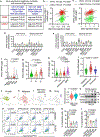
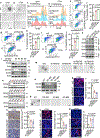
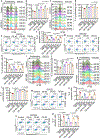
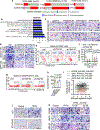
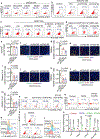
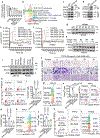
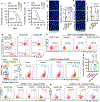



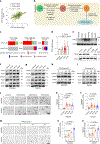
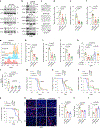
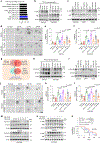


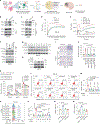
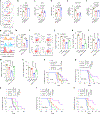
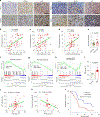
Similar articles
-
The dual role of POSTN in maintaining glioblastoma stem cells and the immunosuppressive phenotype of microglia in glioblastoma.J Exp Clin Cancer Res. 2024 Sep 4;43(1):252. doi: 10.1186/s13046-024-03175-9. J Exp Clin Cancer Res. 2024. PMID: 39227950 Free PMC article.
-
Glioblastoma Stem Cells at the Nexus of Tumor Heterogeneity, Immune Evasion, and Therapeutic Resistance.Cells. 2025 Apr 9;14(8):562. doi: 10.3390/cells14080562. Cells. 2025. PMID: 40277888 Free PMC article. Review.
-
Circadian Regulator CLOCK Recruits Immune-Suppressive Microglia into the GBM Tumor Microenvironment.Cancer Discov. 2020 Mar;10(3):371-381. doi: 10.1158/2159-8290.CD-19-0400. Epub 2020 Jan 9. Cancer Discov. 2020. PMID: 31919052 Free PMC article.
-
TRIM8 regulates stemness in glioblastoma through PIAS3-STAT3.Mol Oncol. 2017 Mar;11(3):280-294. doi: 10.1002/1878-0261.12034. Epub 2017 Feb 15. Mol Oncol. 2017. PMID: 28100038 Free PMC article.
-
Novel concept of the border niche: glioblastoma cells use oligodendrocytes progenitor cells (GAOs) and microglia to acquire stem cell-like features.Brain Tumor Pathol. 2019 Apr;36(2):63-73. doi: 10.1007/s10014-019-00341-2. Epub 2019 Apr 9. Brain Tumor Pathol. 2019. PMID: 30968276 Review.
Cited by
-
The dual role of POSTN in maintaining glioblastoma stem cells and the immunosuppressive phenotype of microglia in glioblastoma.J Exp Clin Cancer Res. 2024 Sep 4;43(1):252. doi: 10.1186/s13046-024-03175-9. J Exp Clin Cancer Res. 2024. PMID: 39227950 Free PMC article.
-
Multiomics analyses reveal high yield-related genes in the hypothalamic-pituitary-ovarian/liver axis of chicken.Poult Sci. 2024 Dec;103(12):104276. doi: 10.1016/j.psj.2024.104276. Epub 2024 Sep 2. Poult Sci. 2024. PMID: 39299017 Free PMC article.
-
Hypoxia within the glioblastoma tumor microenvironment: a master saboteur of novel treatments.Front Immunol. 2024 Jun 26;15:1384249. doi: 10.3389/fimmu.2024.1384249. eCollection 2024. Front Immunol. 2024. PMID: 38994360 Free PMC article. Review.
-
Epigenetic regulation of tumor-immune symbiosis in glioma.Trends Mol Med. 2024 May;30(5):429-442. doi: 10.1016/j.molmed.2024.02.004. Epub 2024 Mar 7. Trends Mol Med. 2024. PMID: 38453529 Free PMC article. Review.
-
Lipid-Laden Macrophages Recycle Myelin to Feed Glioblastoma.Cancer Res. 2024 Nov 15;84(22):3712-3714. doi: 10.1158/0008-5472.CAN-24-3362. Cancer Res. 2024. PMID: 39292810 Free PMC article.
References
MeSH terms
Substances
Grants and funding
LinkOut - more resources
Full Text Sources
Molecular Biology Databases
Research Materials
Miscellaneous

